Baby roaches look different from adult roaches. Upon noticing them in your house, that is a sure indicator that the house is infested with roaches. Knowing how they look like is crucial if you want to get rid of them fast.
Generally, the young cockroaches are smaller than adults and have distinct features that distinguish them from adult roaches. Their color, wing type, body stripes among other features make it easier for you to identify the type of roach nymph you’re dealing with. Following are details, pictures plus how to get rid of them
Table of Contents
What do Baby Roaches look like-Pictures
Following are pictures of how they look like.
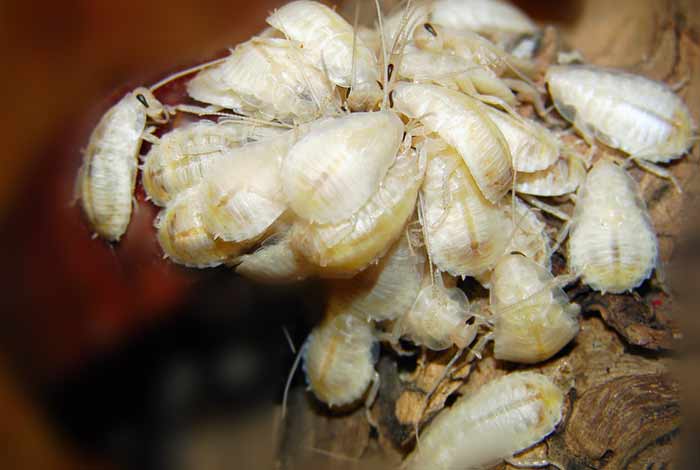
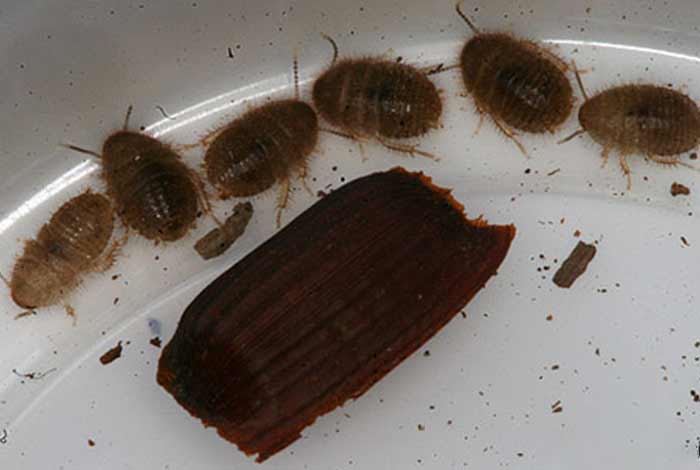
Baby German Roach Pic
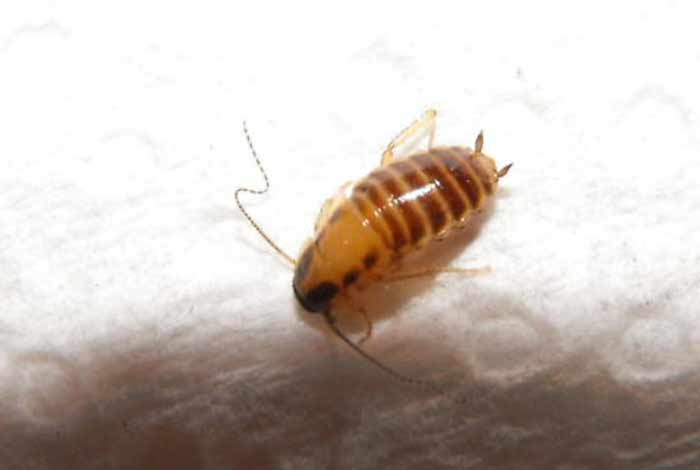
Baby Dubia Roach Photo
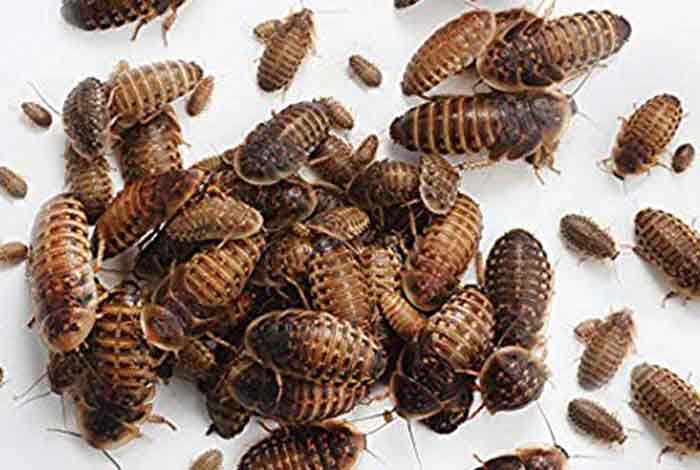
Baby American Roaches
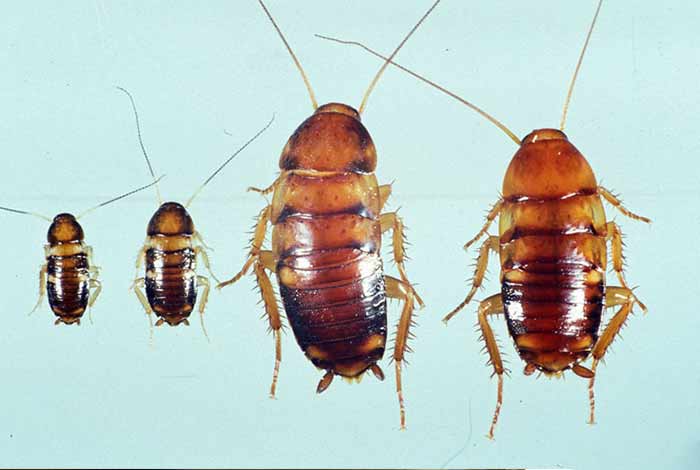
Having emerged from the oothea or egg case, an immature cockroach is referred to as a baby roach or nymph. Baby roaches initially appear white but the color will, however, darken within a few hours. When the nymphs breathe, they grow in size, and their skin coating grows harder and darkens as well. Food availability also has an impact on its color.
Baby roaches appear gray-brown but the color darkens upon each molt. German baby roaches are less than 4 millimeters long upon hatching. Their entire bodies are dark except for a brighter patch that appears on the nymph’s back.
The bright patch often becomes pronounced as the nymph molts through its second and third stages. Brown-banded nymphs’ bodies have two separate bands which either appear as light gold or black.
The American nymphs appear gray-brown but in due time grow red. They are easy to spot since they have yellow bands that run across their abdomen
Damages That Baby Roaches Cause
Baby roaches pose a great risk in peoples’ homesteads. They often cause damage to property and pose a great health risk to human beings.
As the WHO (World Health Organization) notes, they move freely from building to building or from drains, gardens, sewers and latrines to human habitations. Owing to the fact that these insects feed on human fecal matter as well as human food, they can spread germs that cause disease.
Baby and adult cockroaches can spread disease by contaminating human food with germs they pick up in latrines, garbage dumps, etc. They may also play a supplementary role in the spread of some diseases.
There is evidence they are carriers of the organisms causing:
- Diarrhoea
- Dysentery
- Cholera
- Leprosy
- Plague
- Typhoid fever
- Viral diseases such as poliomyelitis.
In addition they carry the eggs of parasitic worms and may cause allergic reactions, including dermatitis, itching, swelling of the eyelids and more serious respiratory conditions.
Nymphs always carry diseases that often spread quickly if not contained in time.
As babies develop, they molt, leaving behind shells all over your house. The shells create an unpleasant atmosphere and build up dirt in your house. The shells can also trigger allergic symptoms whenever an allergic person comes into contact with the shells.
The saliva from nymphs, the waste they produce and their dead bodies also trigger asthma and allergic reactions
How to Get Rid of Baby Roaches in Bathroom, House & Kitchen
The procedures used to get rid of baby roaches differs from the methods you would use to remove adult roaches. Each method employed is effective for kitchen, bathroom and sections of your house.. These methods have proved to effectively kill and remove baby roaches from people’s homes,
Sealing up Cracks and Holes
By using foam and caulk, you can easily get rid of baby roaches permanently from your house. First, locate all entry points for these baby roaches, these are regions that have holes or cracks where nymphs can easily crawl through. Regions that roaches easily infest include;
- Interior pipes
- Cars
- The roof
- Windows
- The home’s foundation
- Baseboards and molding
Assess the areas using a tooth comb while looking for holes and cracks and place marks on regions that require treatment. After spotting all regions, fill the gaps using foam or caulk or form.
Caulk is used for spots that are smaller than 0.5 inches, spots that can be seen easily and need thorough work and spots such as joints that require a flexible seal. Foam is applied for bigger gaps that are greater than 0.5 inches. Foam is applied to dry areas, cavities which are also hard to reach and spots that require insulation.
How to Apply Caulk and seal Gaps and Cracks
First, clean the damaged surface and get rid of all caulk from the region. Also, remove loose debris using a cloth or caulk removing tool. Create a straight edge by applying masking tape on either side of the crack. Then, prepare a caulk tube, begin by slicing the nozzle at an appropriate length and create a hole in the inner seal using a knife. The tube is then placed in the caulk gun.
For an even application of caulk, exert pressure on the caulk gun consistently then smoothen the surface using your fingers. Finally, remove the masking tape.
How to Apply Foam to Seal gaps and Cracks
Dress appropriately by incorporating gloves, goggles, respiratory protection, and protective clothes. Attach the dispenser onto the can valve then invert the can. Press the trigger to release foam into the gaps and cracks. For deep cracks, let the foam settle completely before applying foam once again. The excess foam is then trimmed and the treated spot allowed to heal on its own.
Use of Borax
This is a faster and effective way to get rid of baby roaches from your house. This powder is also a laundry booster and a cleaning agent. It works effectively by drying up the nymphs’ exoskeleton leaving them dehydrated. They eventually die. The powder does not kill the roaches instantly, but instead, gives the roach time to go back to the nest where it can infect other nymphs.
Cleaning your home
This is the most important procedure anyone can employ in getting rid of baby roaches. For a house that lacks gaps and cracks, tidying up the house is an effective way of eliminating nymphs.
Roaches mainly infest houses to acquire food water and shelter. By eliminating their food sources, the nymphs lack a reason to stay around. Besides, restricting them from water sources will help eliminate the roaches.
Employing Roach Traps
Professional roach exterminators’ advice the use of roach traps before applying bug sprays or roach powders.
The traps are effective since you can see the number of roaches caught and gives you a rough estimate of how infested your house is, by these nymphs.
In case the traps fail to capture, the nymphs, move it to a different location. Once you have located their breeding ground, you can apply powders or bug sprays at the spot.
Application of Boric Acid and Sugar
Boric acid and borax both work similarly, however, boric acid is more toxic. Sugar will simply attract the nymphs but it is the acid that will kill them. Boric acid causes the roaches’ exoskeleton to dry, resulting in dehydration and eventual death.
Removing Standing Water
Baby roaches are most probably looking for food and water in your house. Standing water attracts baby roaches, therefore, still, water found in sinks or bathtubs should be removed.
Leaking pipes also attract nymphs, you should repair the pipes immediately. You can also use a dehumidifier to remove all moisture in your house that attracts roaches.
Use of Natural Nymph Repellants
For homeowners who never appreciate the use of poisonous sprays and toxic powders, natural nymph repellants are and effective method to get rid of the roaches. Recent studies have proven the following repellants to be effective in eradicating the nymphs;
- Nepetalactone is a product you can find in catnip. Having located the roach-infested region, leave the catnip at that location. It naturally creates an inhabitable environment for the nymphs.
- Application of Osage orange oil on cracks and gaps where roaches have infested gets rid of baby roaches instantly.
- Cineole or Eucalyptol that you can find in bay leaves is also a natural repellant. Dry the bay leaves and leave them in infested areas. The plant simply repels the roaches.
The natural repellants are effective for keeping nymphs away from houses, however, they are never the perfect solution for dealing with an infestation.
Using Roach Sprays
Roach sprays are applied to the nests and infested spots. You should spray areas such as cracks, crevices, doors, and windows. Once you spot roaches running around, spray them too.
Use of Insect Growth Regulators
An insect Growth Regulator inhibits a nymph from reproducing and attaining full maturity. The product, however, does not kill the baby roaches. This method prevents the infestation of roaches by providing the nymphs with juvenile hormones that inhibit molting and development into adults.
Use of Soap and Water
A simple detergent comprising of soap and water can kill roaches. This method is effective when dealing with a few roaches. Soap blocks their pores resulting in suffocation and eventually, the nymphs die.
Prevention Measures
It is essential to get rid of nymphs, however, prevention is better than cure. There are some measures you can take to prevent baby roach infestation, some of the measures include;
- Keeping food enclosed at all times – Food and open food containers should be sealed or placed in Ziploc bags or airtight containers.
- Dirty plates and utensils should be cleaned immediately. Leftover food should be scraped from plates; this gets rid of any food sources for the roaches.
- Trash should be taken out regularly. Garbage is a perfect breeding ground for roaches, therefore, eliminating their habitat makes the nymphs uncomfortable.
- Home appliances such as ovens and refrigerators require regular cleaning at the back. Food crumbs often sneak into these regions, providing food for the roaches. The nymphs also love dark spots, the backs of these appliances provide perfect breeding spots.
- Counters require wiping everyday especially after preparing food or eating on the surface.
- Floors should be swept and cleaned frequently using detergents. This removes food particles from your floor, thus depriving the nymphs of nutrition.
Frequently Asked Questions
What does seeing baby roaches after extermination means?
This is very common, especially after extermination. It is no cause for alarm and you should not spray or apply other methods to get rid of the roaches immediately.
Application of sprays might interfere with the treatment applied by the exterminator and result in roaches scattering, causing infestations in other household regions that were not previously infested. You can manually get rid of the few baby roaches you spot but never use chemical means. The roaches will soon die due to the extermination.
Do baby cockroaches fly?
Only a few species of baby cockroaches can fly, however, most of them cannot. They use their wings to stabilize themselves when jumping which appears as flight.
Do baby roaches bites?
Yes, baby roaches bite but their bites are uncommon. They only bite when their population exceeds their sources of food, thus they have to find other supplies of food.
Do baby roaches look like ants?
Yes, from their behavior to their life patterns, the roaches and ants have peculiar similarities.
References
- https://www.cdc.gov/nceh/publications/books/housing/cha04.htm
- https://www.ncbi.nlm.nih.gov/pubmed/15753892
- https://www.orkin.com/cockroaches/cockroach-nymph
- https://www.terminix.com/pest-control/cockroaches/facts/
Further Reading